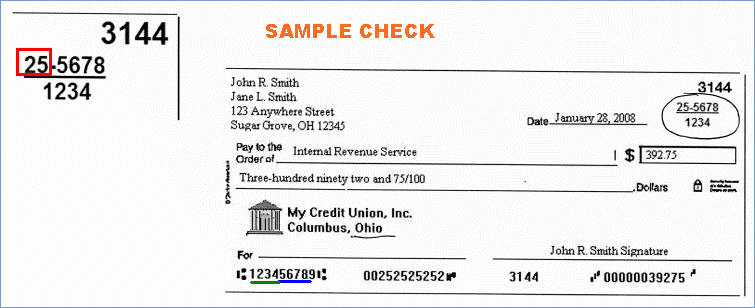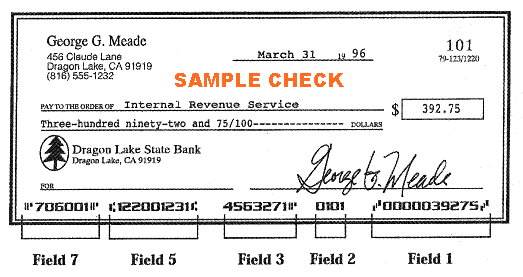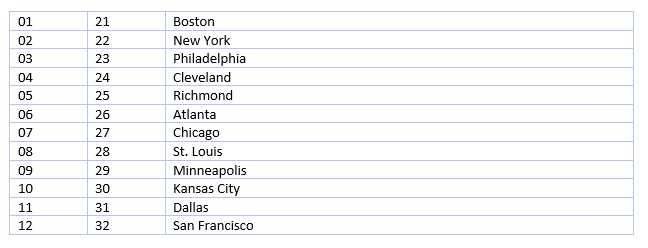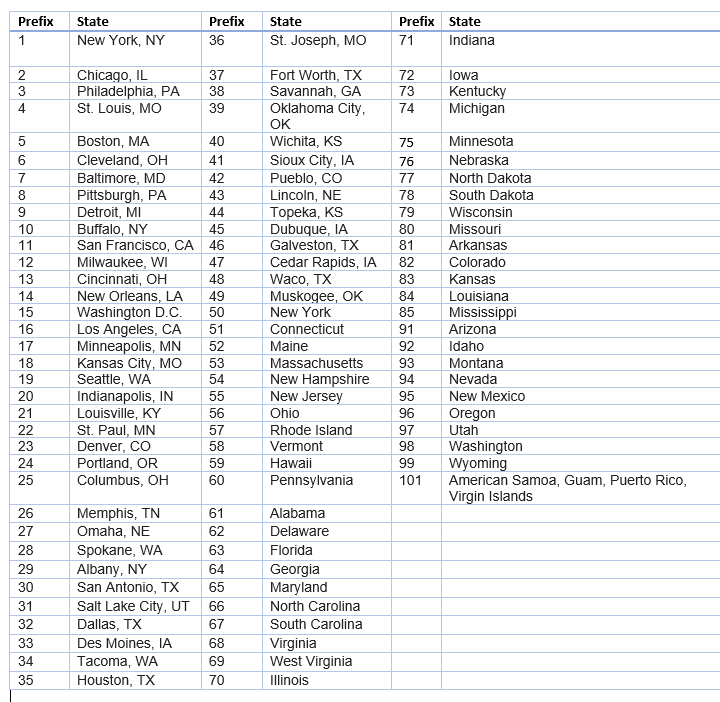Tips for Recognizing a Fraudulent Check
What is a Fractional?
A fractional is used to determine the financial institution of the share draft if the MICR line is ever damaged or torn off:
- 2 digit city and state prefix pre-assigned by “Accuity” (in the example, the prefix is 25 – see red below)
- Digits 5-8 of the routing number and transit number indicating the institution identifier (in the example, this is 5678 – see blue below.)
- First 4 digits of the routing and transit number indicating the Federal Reserve district (in the example, this is 1234 – see green below.)
A fractional can be used as a fraud detection tool. The information in the fractional should always match the information in the MICR line. The check shown below is a fraud. The state code “56” should be used, instead of “25,” which is a city code. (See State Codes listed below.)

Elements of a Check
 Federal Reserve Perforation – Look for at least one perforated side on the check
Bank address – The address of the bank should correspond to the appropriate Federal Reserve District. For example, if you receive a check drawn in California, the routing/transit number generally should depict the Twelfth Federal Reserve District (12). Note, however, that some banks with offices in several Federal Reserve Districts are using a routing/transit number for one Federal Reserve District and a bank address in a different Federal Reserve District.
District and Office - The first two digits of field of field 5, the routing/transit number in the MICR line, indicates the Federal Reserve District.
Federal Reserve Perforation – Look for at least one perforated side on the check
Bank address – The address of the bank should correspond to the appropriate Federal Reserve District. For example, if you receive a check drawn in California, the routing/transit number generally should depict the Twelfth Federal Reserve District (12). Note, however, that some banks with offices in several Federal Reserve Districts are using a routing/transit number for one Federal Reserve District and a bank address in a different Federal Reserve District.
District and Office - The first two digits of field of field 5, the routing/transit number in the MICR line, indicates the Federal Reserve District.
Federal Reserve Districts
 The third digit indicates the particular District Office. As an example, in the Sixth District, the numbers and offices are:
The third digit indicates the particular District Office. As an example, in the Sixth District, the numbers and offices are:
District Offices (Sixth District)
| 1 |
Atlanta |
4 |
Nashville |
| 2 |
Birmingham |
5 |
New Orleans |
| 3 |
Jacksonville |
6 |
Miami |
State Codes
*State prefixes for Alaska, Hawaii, and Territories and Dependencies are listed numerically under the corresponding region. They are not, however, geographically located in that region.
 Interested in viewing the Fraudulent Check Alerts? View this website: http://alerts.cubase.org/alerts_for/fraud_alerts/
(You must be on the network to view this website.)
Interested in viewing the Fraudulent Check Alerts? View this website: http://alerts.cubase.org/alerts_for/fraud_alerts/
(You must be on the network to view this website.)